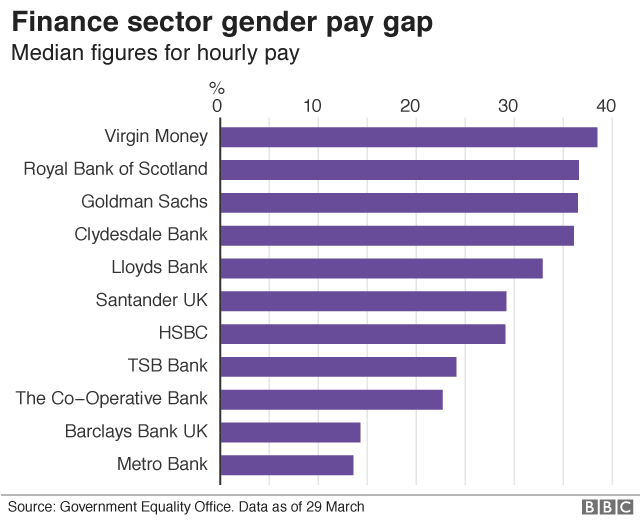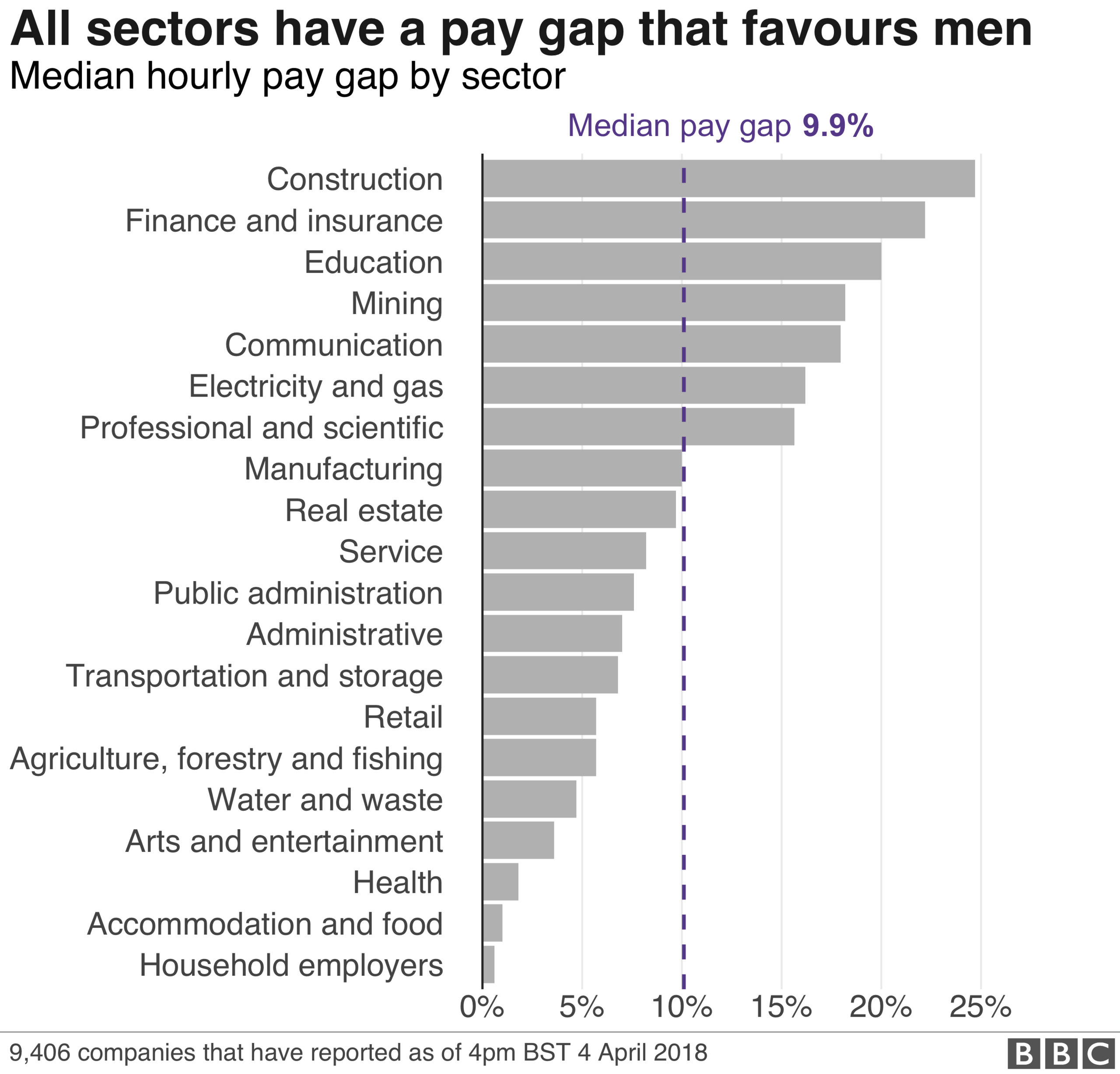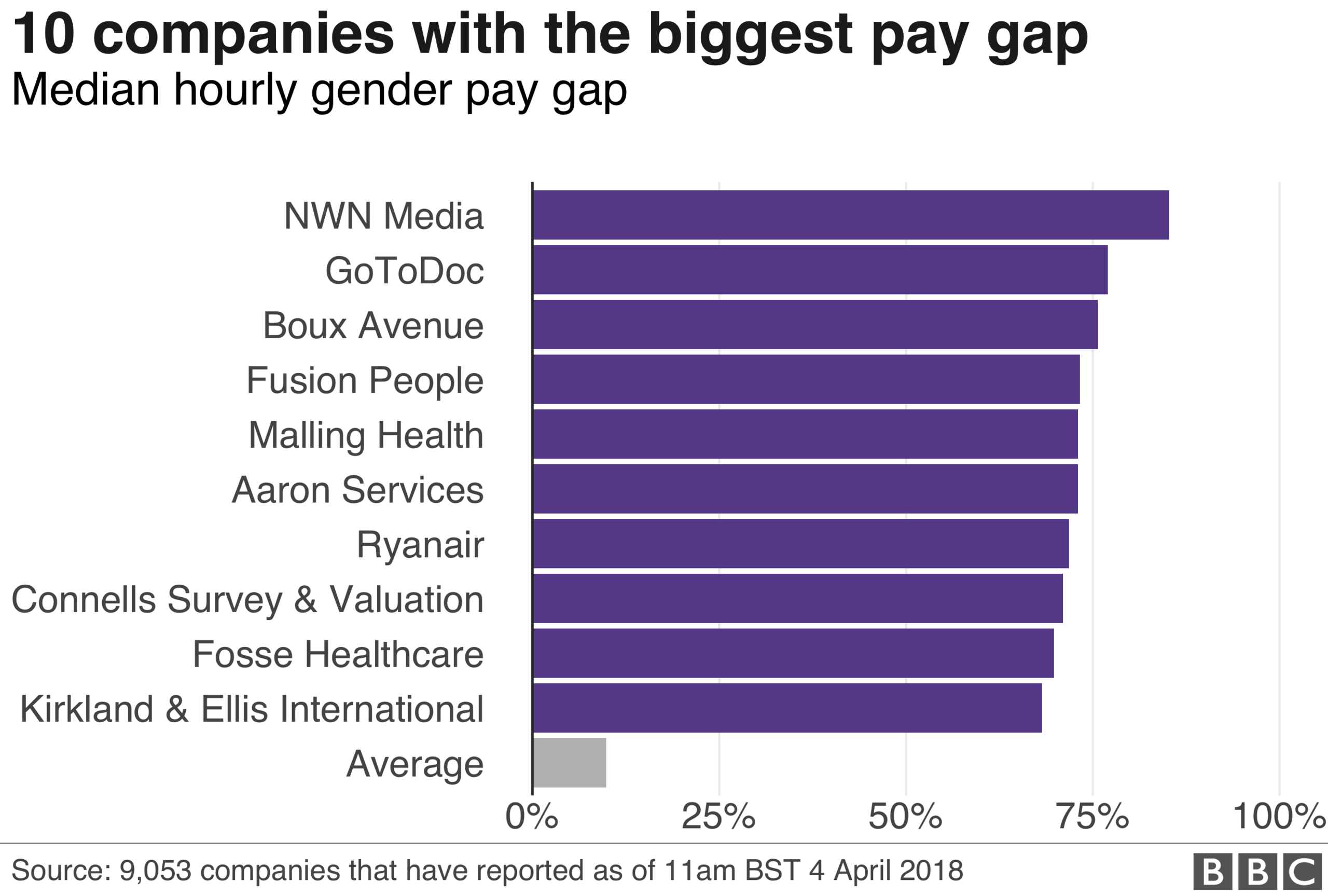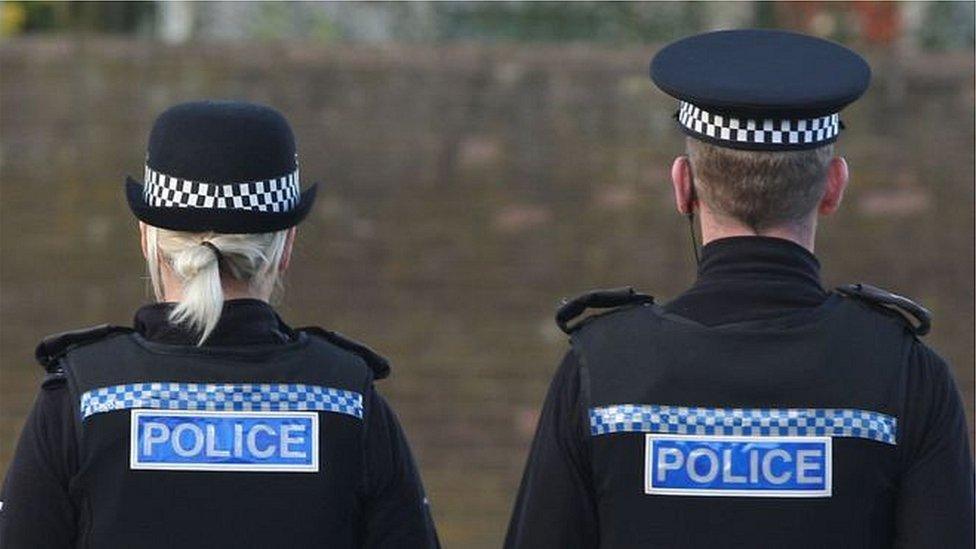What is the gender pay gap at your company?
- Published
Gender pay gap: What do women think?
UK companies have submitted their gender pay figures ahead of Wednesday's midnight deadline.
Just over 10,000 companies did so ahead of the deadline, with more than 1,000 firms reporting on the last day.
The median pay gap among all companies that have reported is 9.7%.
Of those that have submitted their figures, 78% pay men more than women, 14% pay women more and 8% said they had no gender pay gap, based on the median measure.
Firms with more than 250 staff must state the average difference between male and female employees.
Want to find out the gender pay gap at your company? Try the calculator below.
If you can't see the calculator, click here, external.
One of the biggest names among the worst offenders so far is Ryanair, which reported a 71.8% gender pay gap.
Meanwhile, High Street brands KFC, Matalan, Starbucks, Costa, McDonald's and Primark reported no difference in what they paid their female and male staff.
In terms of bonus gaps, several NHS trusts have some of the highest figures, with Hull and East Yorkshire Hospitals NHS Trust General Purposes Charity revealing a figure of 99.4%.
Some have criticised the exercise, which also applies to charities and public sector bodies, as a crude mechanism open to misinterpretation.

However, gender equality campaigning charity the Fawcett Society says it represents an opportunity for employees to talk about pay and find out what their colleagues earn.
Sam Smethers, the society's chief executive, said gender pay gap reporting was a game-changer in terms of workplace culture and practices.
"Finally women are realising that they have a right to talk about pay and they cannot be silenced," she said.
"By finding out what their colleagues earn, they are then in a position to challenge any pay inequality; it is much more common than people realise."



CBI director-general Carolyn Fairbairn said gender pay gap reporting was a chance for companies for businesses to bring about change.
However, she warned that companies could not close the gap by themselves. "Many of the causes of the gender pay gap lie outside the workplace and will require a partnership between companies and government if we are to dliver long-term, lasting change."
Ms Fairbairn said knowing the average pay difference between men and women would help companies develop more inclusive workplaces and support the rise of more women into senior roles.
Want to learn more about the gender gap? Try asking our bot below.
Research conducted by Business in the Community found 92% of female respondents would use gender pay gap data to choose between two potential employers.
It also found more than than half of women would favour the company with the smallest pay gap or the one that was doing to most to close it.

Chloe Chambraud, gender equality director at Business in the Community, said bosses had to understand the factors driving their pay gaps and the groups of women who were most affected.
"Employers must address the root causes of inequality, from reducing bias and increasing transparency in recruitment, appraisal and promotion processes to normalising flexible working, for men and women, and offer financially viable parental leave packages," she said.
"Only then we will ensure that men and women have equal lives at work and home."
Data as of 4pm on 4 April. Individual company data has been reported by companies to the Government Equalities Office. All gender pay gap figures in this article reflect the hourly median pay gap for all employees. The national and sector gender pay gap figures come from the 2017 ONS ASHE survey.
Calculator design and development: Evisa Terziu and Sumi Senthinathan
Data journalism: Will Dahlgreen, Ransome Mpini, Daniele Palumbo and Clara Guibourg
- Published4 April 2018

- Published21 March 2018

- Published21 February 2018

- Published3 April 2018

